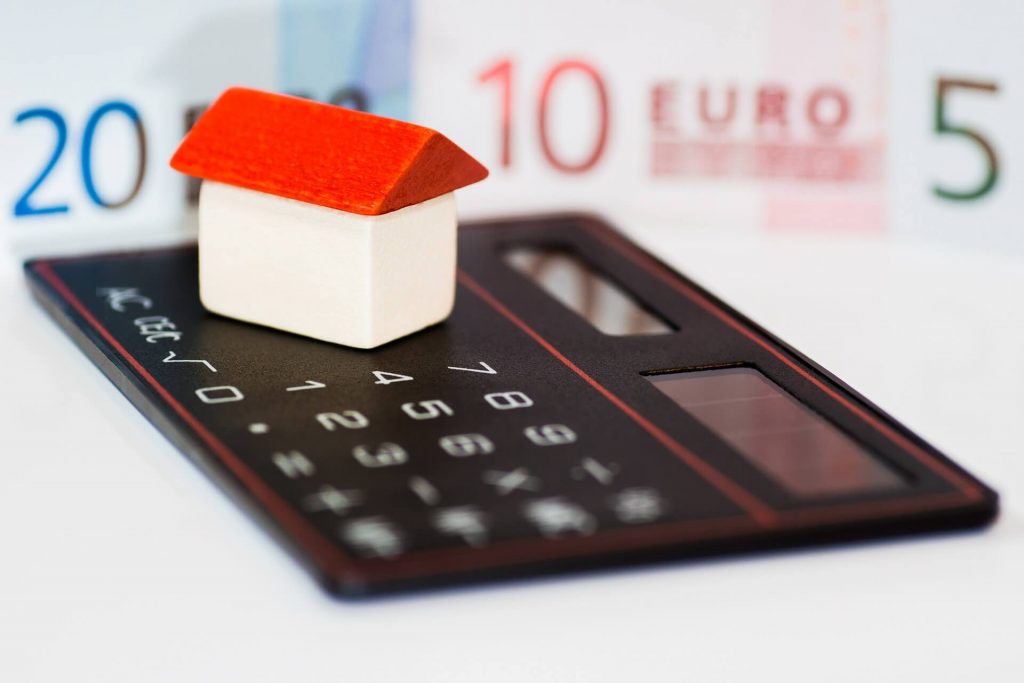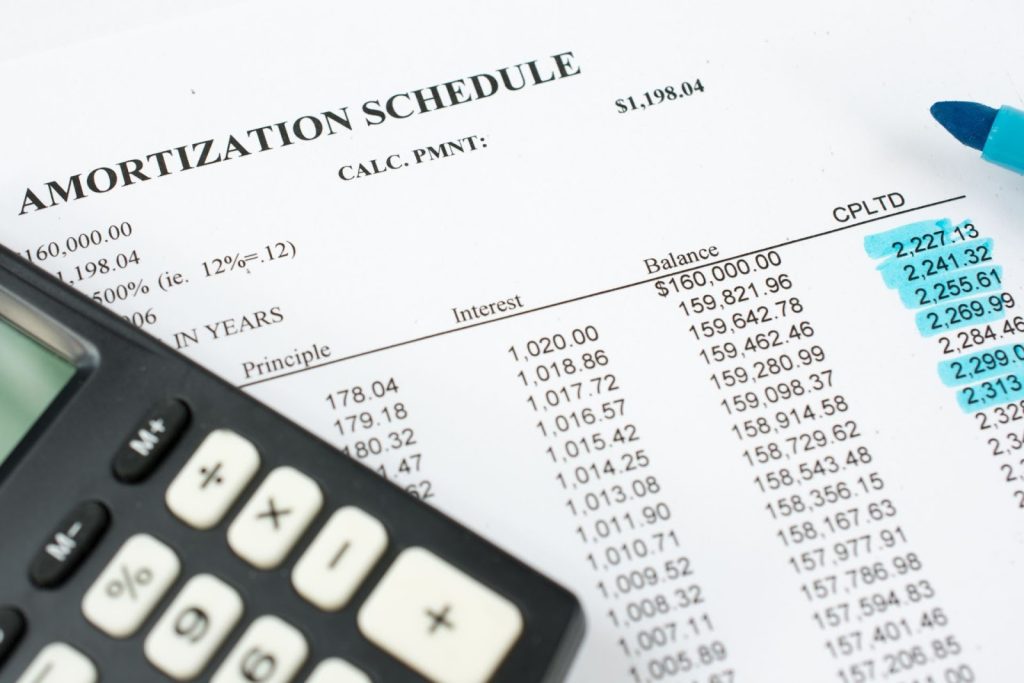Ultimate Guide to Mortgages in Switzerland
Buying property in Switzerland can be an exciting prospect, especially for those dreaming of a cozy alpine retreat. Switzerland offers a unique and appealing opportunity for property buyers, with its stable market.
The Swiss mortgage landscape offers unique features and considerations for prospective homeowners. The available mortgage options offer different benefits depending on market conditions and personal preferences, however, navigating the Swiss mortgage landscape requires careful consideration.

Whether you’re dreaming of a mountain retreat or a long-term investment, understanding the basics of Swiss mortgages is essential. This guide will help you understand various mortgage options and requirements. Equipped with all the details from this guide, you’ll be able to navigate the process much more easily and turn your dream of owning a home in this beautiful country into a reality.
How Does the Swiss Mortgage Market Work?
Switzerland’s mortgage landscape is unique, offering both challenges and advantages for prospective homeowners. Banks typically provide loans up to 80% of a property’s market value, requiring buyers to contribute a 20% deposit. At least half of this deposit must be in cash, while the remainder can come from a pension fund.
Swiss mortgages often have extended terms, sometimes spanning 50 to 100 years. This long-term approach can make monthly payments more manageable for homeowners.
The Swiss mortgage system often splits loans into two parts. The primary portion covers 60-70% of the property cost and doesn’t require repayment. The secondary part bridges the gap between the first mortgage and the deposit, featuring a fixed repayment schedule and higher interest rates.
Is mortgage repayment necessary?
Interestingly, in Switzerland, many homeowners choose not to fully repay their Switzerland mortgages. It’s common to maintain 65% of the mortgage debt indefinitely. This approach might seem counterintuitive to foreigners, but it can offer financial benefits.
Here are some reasons to consider not repaying:
- Low interest rates
- Potential tax advantages
- Opportunity for alternative investments
While keeping a mortgage increases taxable assets, the low interest rates often make this a minor concern. Many find it more financially prudent to invest in stocks rather than pay down their mortgage.
Reducing mortgage debt can lead to increased net worth and higher wealth taxes, so for some this approach is a great solution. Swiss mortgage terms allow for this flexibility, making it a logical choice for many homeowners.
However, keep in mind that each situation is unique. It’s essential to consider personal financial goals and circumstances when deciding whether to repay or maintain a mortgage in Switzerland.
View properties in Verbier to bring your Swiss homeownership dream to life.
Who Qualifies for a Mortgage in Switzerland?
Obtaining a mortgage in Switzerland depends on several factors, particularly residency status. Residents with B or C permits can typically apply for mortgages in Switzerland and buy property. Non-residents face more hurdles due to the Lex Koller law, which restricts foreign property purchases.
For those without residency, the process becomes trickier for the following reasons:
- They must apply for a special license from cantonal authorities.
- They can only buy vacation properties in certain areas.
- Quotas may limit available properties.
Key requirements for expats seeking mortgages in Switzerland include:
- Proof of residency
- Evidence of ability to repay
- Deposit confirmation
For those who qualify, finding the right mortgage involves assessing your financial situation carefully. Swiss lenders typically expect a minimum 20% down payment and will evaluate your income and expenses thoroughly.
To improve chances of approval, potential buyers should save for a larger down payment, improve credit score, stabilize income, and reduce existing debts.
Remember, each canton may have slightly different rules and processes for property purchases and mortgages in Switzerland. Consulting with local experts can help navigate the complexities of the Swiss property market and find the best mortgage options available.
Explore our properties in Verbier and check your eligibility.
Swiss Mortgage Interest Rates

Switzerland’s mortgage market offers surprisingly favorable rates for potential homeowners. The current reference mortgage rate sits at 1.75%, a figure that influences rent determinations nationwide. While this represents a slight uptick from previous years, it remains competitive on the global stage.
The strength of the Swiss economy and its currency contributes to low inflation, suggesting interest rates may stay modest in the near future. However, it’s crucial to note that rates can differ significantly between financial institutions. An individual’s financial profile and circumstances play a key role in determining their specific rate.
Major Swiss banks provide benchmark rates that serve as useful comparisons:
| Mortgage Type | Interest Rate Range |
| Fixed-rate (10 years) | 1.5% – 2.1.% |
| Variable-rate | 2.35 – 3.85% |
| SARON (1-month) | 1.60% |
| Construction loan | 2.75% + 0.25% quarterly commission |
These figures highlight the attractive options available in the Swiss market.
- Fixed-rate mortgages offer stability, with longer terms generally carrying higher rates.
- Variable-rate options provide flexibility but come at a premium.
- SARON mortgages, tied to the Swiss Average Rate Overnight, present another alternative for borrowers.
Prospective homebuyers should consider their long-term plans and financial goals when selecting a mortgage type. It’s advisable to explore options from multiple mortgage lenders, as rates and terms can vary. Many banks offer online calculators to help estimate monthly payments based on loan amount, interest rate, and term length.
Discover luxury homes at competitive rates and take advantage of Switzerland’s mortgage conditions.
How Much Can You Borrow for a Swiss Home?
When seeking a mortgage in Switzerland, the amount you can borrow depends largely on your income. Banks use a theoretical interest rate, typically around 4.5% to 5%, to assess affordability. This approach helps ensure borrowers can manage potential rate increases.
Swiss lenders also factor in annual amortization (usually 1%) and maintenance costs (0.5% to 1% of the property value). The total cost, including these factors, should not exceed 33% of your income.
Typically, banks will lend up to 80% of the property’s value.
Here’s a simplified example:
| Item | Amount |
| Property value | CHF 1,000,000 |
| Down payment (20%) | CHF 200,000 |
| Mortgage loan | CHF 800,000 |
When calculating affordability, banks consider:
- Theoretical interest (5%): CHF 40,000/year
- Principal repayment (1%): CHF 8,000/year
- Additional costs (1%): CHF 10,000/year
This totals CHF 58,000 per year or CHF 4,850 monthly. Your income would need to be at least three times this amount to qualify for such a mortgage.
It’s important to note that these calculations are for illustrative purposes. Actual terms may vary depending on the specific bank and your financial situation.
When looking to buy Swiss property, remember that the mortgage amount is influenced by:
- Your income
- The property value
- Current market conditions
- Your credit history
It’s worth noting that banks may be more willing to lend for primary residences compared to investment properties. The purchase price of luxury homes or high-value real estate might require additional scrutiny or a larger down payment.
We recommend that you always consult with multiple lenders to find the best terms for your situation.
How Much Money Do You Need?

When purchasing a property, buyers typically can’t rely on a mortgage to cover the entire cost. A portion of the home’s value must be paid upfront, known as the down payment. This requirement encourages responsible saving and homeownership.
In most cases, buyers need to put down 20% of the property’s value. For example, on a $500,000 home, the down payment would be $100,000. The mortgage would then cover the remaining 80%, or $400,000.
At least half of the down payment must come from the buyer’s own funds. The rest can be sourced from retirement accounts, including:
- Second pillar (occupational pension)
- Third pillar (private pension)
Those under 50 years of age can withdraw their entire second pillar balance for a home purchase. Older individuals are limited to the amount they had at age 50.
It’s important to note that tapping into retirement funds can impact future financial security. Additionally, tax benefits may be affected:
- Voluntary contributions to the second pillar become non-deductible
- Recent contributions (within 3 years) can’t be withdrawn
For those struggling to come up with the minimum 10% cash requirement, options may be limited. It might be wise to reconsider the home purchase or explore alternative financing methods.
As a buyer, you should carefully weigh the pros and cons of different down payment amounts. While a larger down payment can lead to better mortgage terms, it may not be the most advantageous choice in every situation.
Additional Costs When Buying Property
Purchasing real estate in Switzerland involves more than just the down payment. Buyers should be prepared for additional fees that can significantly impact their budget.
These extra expenses typically amount to about 5% of the property’s value and must be paid in cash. They include:
- Notary fees
- Property transfer charges
- Real estate acquisition taxes
It’s crucial to factor these costs into your financial planning. While some banks might occasionally include these fees in the mortgage, it’s not common practice.
To be on the safe side, aim to have 25% of the property value available before making a purchase. In this case, at least 15% should be in cash, separate from retirement assets.
Being aware of these costs and other mortgage fees helps avoid surprises and ensures a smoother property acquisition process. Planning ahead for these expenses can make the difference between a stressful purchase and a well-executed investment.
Mortgage Options

There are various options you can consider when it comes to Swiss mortgages.
Fixed-rate mortgage
Fixed-interest-rate mortgages offer predictable monthly payments throughout the loan term. The mortgage interest rate remains unchanged, providing stability for budgeting and financial planning. These loans typically last 15-20 years in Switzerland.
Pros:
- Consistent payments
- Protection from rate increases
Cons:
- May miss out on lower mortgage rates
- Higher initial costs
Homeowners often use these as a strategic phase before exploring other options or renegotiating terms.
Variable-rate mortgage
These loans start with lower rates but can fluctuate over time. While potentially offering initial savings, they carry the risk of increased payments if market conditions change.
Key features:
- Flexible switching options
- No minimum repayment requirement
- Loan terms can extend beyond 50 years
SARON mortgage
Previously LIBOR mortgages, these short-term loans are transitioning to SARON (Swiss Average Rate Overnight). They offer variable rates with adjustments at set intervals, typically lasting up to 5 years.
Characteristics:
- Predefined rollover periods
- Based on domestic money market rates
- Commonly used internationally
Bridging loans
For those buying a new home before selling their current property, lenders offer short-term loans. These cover up to 75% of the new property’s value but require a solid repayment plan.
Offset mortgages
This option allows borrowers to link their mortgage with other accounts at the same bank. The balance in these accounts reduces the interest paid on the mortgage, potentially shortening the loan term.
Accounts that can be linked:
- Savings
- Pension funds
- Third-pillar accounts
Green mortgages
Environmentally conscious loans are gaining popularity in Switzerland. These plans encourage energy-efficient home purchases or green renovations by offering significantly lower interest rates (sometimes up to 0.8% less than traditional options).
Special-purpose mortgage
Swiss lenders offer tailored financing options for various needs:
Building loans
- For new home construction
- Convertible to standard mortgages after completion
Business property loans
- Various rate options available
- Specifically for purchasing commercial real estate
Home improvement financing
- Favorable interest rates
- Typically range from CHF 100,000 to CHF 250,000
- Designated for property upgrades and renovations
When considering these options, it’s crucial to assess your financial situation, future plans, and risk tolerance. Each loan type has its advantages and potential drawbacks, so consulting with a financial advisor can help you make the best choice for your circumstances.
Remember, mortgage terms and conditions can vary between lenders. It’s always wise to shop around and compare offers before making a decision. Additionally, keep in mind that the Swiss mortgage landscape is unique, with many homeowners opting for long-term financing rather than fully paying off their loans.
If you’re considering buying a luxury property, now is the perfect time to explore your options in Verbier.
Renewing Your Home Loan
When your fixed-rate home loan term ends, it’s time to reassess your options. This process lets you adapt your loan to current market conditions and your financial situation.
If mortgage interest rates have dropped, you might make a better deal. But be prepared – rates could also be higher than before.
Your personal finances play a key role too. Maybe you’ve had a pay raise or taken on new expenses? These factors can influence which loan type suits you best.
Instead of feeling tied to your current lender, feel free to shop around because other banks might offer more attractive terms. You can use these competing offers as bargaining chips with your existing lender.
Also, remember that renewing isn’t automatic. The bank will look at your finances again, just like when you first bought your home. If things look uncertain, they might push you to sell. But don’t panic because banks often work with borrowers facing minor financial hiccups.
If you’re thinking about future income changes, consider opting for a longer loan term. It could give you more breathing room if you expect your earnings to dip.
Renewing your home loan is a chance to realign your mortgage with your goals. Take the time to explore your options and make an informed decision.
Navigating Mortgages Through Retirement

Securing a mortgage as retirement approaches allows homeowners to maintain property ownership during their non-working years. However, Swiss homeowners face unique challenges when it comes to mortgage renewal in retirement. Banks reassess financial health, and failing to meet criteria could result in property sale.
Reduced income in retirement can complicate loan approval. For those with tight finances, several strategies exist:
- Debt amortization: Effective for reducing debt, though potentially complex for taxes
- Family involvement:
- Selling the home to children pre-retirement and leasing back
- Having children vouch for the property
Proactive planning is key. Ensuring a robust post-retirement income stream helps maintain mortgage commitments.
Here are some options to consider:
| Strategy | Benefit |
| Boost savings | Increases financial cushion |
| Diversify investments | Potentially improves income stability |
| Explore part-time work | Supplements retirement income |
Remember, mortgage interest may be income tax deductible, potentially reducing taxable income. Consulting with a financial advisor can help navigate the complexities of mortgages and taxation in retirement.
Discover properties suited for retirement and plan for the years ahead.
Mortgage Provider: Bank vs. Insurance
Switzerland offers a unique mortgage landscape where both banks and insurance companies compete to provide home loans. While banks remain the traditional go-to for mortgages in Switzerland, insurers have carved out their niche, particularly in fixed-term options. They often present attractive long-term deals that can be worth exploring.
One key difference is the down payment approach. Many insurers don’t allow retirement funds for this purpose, requiring buyers to have at least 20% of the property price in cash. This can be a hurdle for some, but it might suit those with ample savings.
For potential homeowners with flexible finances, it’s wise to compare offers from both banks and insurance companies. Each has its strengths, and shopping around could lead to better terms or rates.
Paying Down Your Mortgage
Paying down your mortgage is a key part of homeownership. There are several strategies to consider when deciding how to manage your loan, including direct and indirect amortization.
Reducing debt directly
Direct amortization is a straightforward approach to paying off a mortgage. It involves making regular payments to the lender, which directly reduce the outstanding loan balance.
As the principal decreases, so does the interest owed. This method is common in many countries and offers a clear path to homeownership.
In Switzerland, borrowers typically need to repay 15% of their mortgage within the first 15 years. This translates to about 1% of the loan value annually.
By year 15, the loan should be no more than 65% of the property’s value. This approach helps homeowners build equity faster and potentially save on interest over time.
Saving while borrowing
Indirect amortization offers a different strategy. Instead of paying down the mortgage directly, borrowers invest in a separate account, often a retirement fund or life insurance policy. The lender maintains a claim on these funds as security for the loan.
Key features of indirect amortization include:
- Loan balance remains unchanged
- Interest payments stay consistent
- Potential tax benefits from retirement contributions
- Possibility of investment growth
This method appeals to those who prefer to keep their money invested rather than tied up in their property. However, it’s important to note that the mortgage debt doesn’t decrease, and interest costs remain higher compared to direct amortization.
When retirement age arrives, the accumulated funds can be used to pay off a portion of the mortgage. This approach requires careful planning and consideration of long-term financial goals.
Retirement Funds and Real Estate: Withdrawal vs. Pledge

When considering using retirement assets to buy property, two main options emerge:
- Withdrawing funds
- Pledging them as collateral
Each approach has its own set of pros and cons.
Withdrawing money directly reduces the amount owed on the property purchase. It’s a straightforward method that lowers the overall debt burden. Pledging, on the other hand, keeps the retirement funds intact while using them as security for the loan. This method results in a higher debt load but offers some potential advantages.
On th either hand, pledging retirement assets can maintain retirement income streams, allow for continued tax-advantaged contributions, provide higher interest deductions on taxes, and defer immediate taxation on the funds.
Here are a few factors to weigh when deciding between withdrawal and pledging:
- Monthly payment capacity
- Current tax bracket
- Performance of retirement accounts
- Desire to make extra contributions
- Time until retirement
For those closer to retirement age, this decision carries more weight. Younger individuals with smaller pension funds might benefit more from withdrawal, as it could free up cash for higher monthly savings or other investments.
Both strategies have merit, and the best choice depends on personal circumstances. It’s crucial to carefully evaluate financial goals, risk tolerance, and long-term plans before tapping into retirement assets for a home purchase.
Wrapping Up
Learning as much as you can about Swiss mortgages can be a game-changer for prospective homeowners. Armed with knowledge about loan types, rates, and regulations, you’ll be steps ahead in your property search.
Remember, understanding the nuances of Swiss financial products can help save money in the long run. Don’t hesitate to ask questions and explore your options thoroughly. With a solid grasp of the mortgage landscape, you’re well-equipped to find that perfect Swiss home and secure the right financing to make it yours.
If you’re considering a luxury property in one of Switzerland’s most sought-after locations, now is the perfect time to explore your options in Verbier. With breathtaking alpine views, world-class skiing, and exclusive real estate opportunities, owning a home in Verbier is the ultimate investment in both lifestyle and luxury.
Contact us today to discover the finest properties available and make your dream of owning in Verbier a reality.




